Places to visit: Mtskheta, Jvari monastery and Svetitskhoveli Cathedral
Ancient Georgian architecture is unique; it was born with pristine beauty of nature in the Caucasus – shining mountain peaks, emerald valleys, steep gorges. The main feature of Georgian architecture is culture stone masonry in cement of carefully hewn stones (stone blocks in the form of rectangular parallelepipeds).
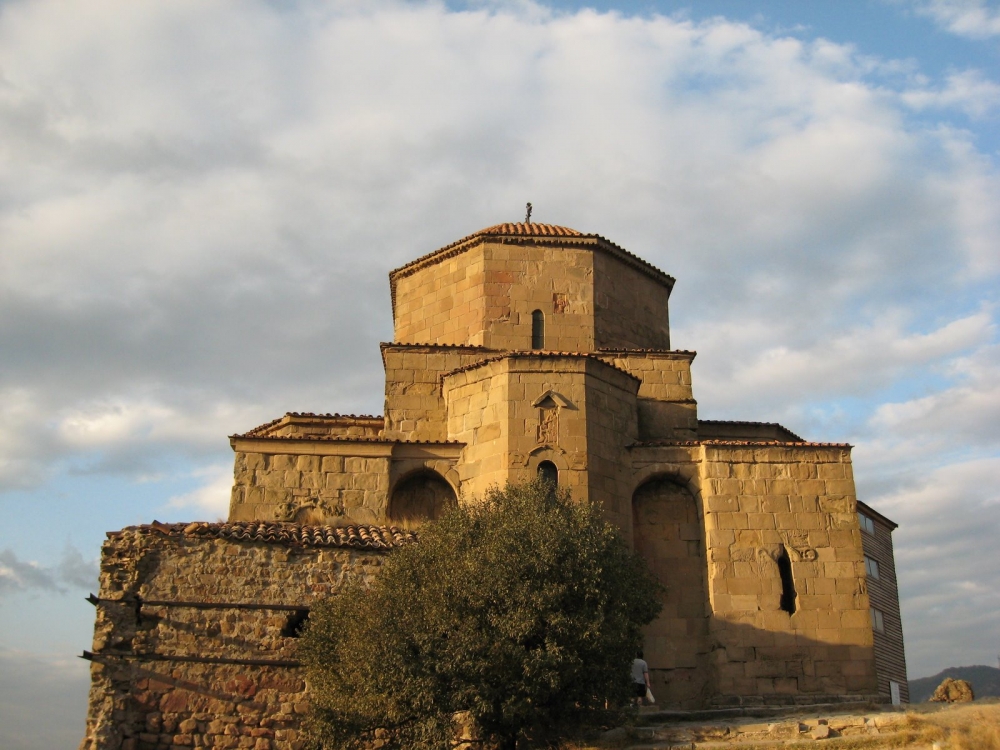
Silhouettes of churches are monolithic. In the smooth walls, resembling almost a mirror plane, cost included relief decor, sometimes collared parts of stones from different breeds. From the sixth century religious architecture of Georgia receives the development of the cross-domed type temple with four adders formed on the Hellenistic East (region, with an octagonal drum of the dome is supported). This technology built the famous Jvari monastery. It stands on the site of a wooden cross, ("Jvari" – “cross”). Jvari monastery is the apotheosis in the development of Georgian architecture, the realization of the human dream, and the symbol of the immensely talented creative thoughts of the Georgian people, life-giving energy and relentless search. The temple though born by mountains, so it is harmonious with the environment. Beautiful majestic structure has repeatedly inspired Georgian poets, in their poetic works Jvari, the holiest of all the Holy for the Georgian people.
Jvari monastery and Svetitskhoveli Cathedral in the old days linked iron chain, which was used by the monks to go down to Svetitskhoveli and after praying to climb back.
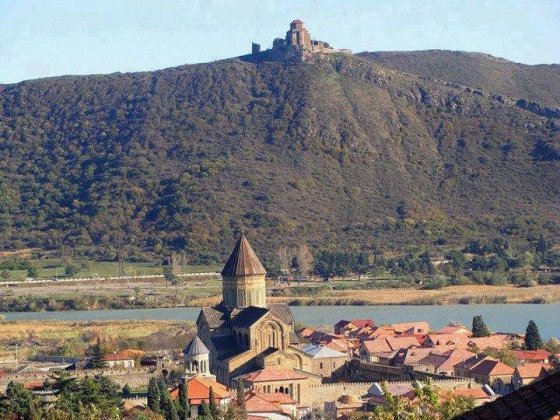
The legend tells that one of the monks once coming back this way looked down and saw a young woman bathed in the waters of the Aragvi River. She was like a fairy nymph, who was engaged bliss on the water surface. Monk could not tear his eyes away from the beautiful body and something hot, strange and inexplicable to men flooded his body. Suddenly the earth was covered with darkness, the storm broke out, the heavens opened and lightning flew into the circuit. Heavy chain broke as dust-like thread, and the monk flew down into the waters of the Aragvi River, swallowing him up in an instant. So he was punished for having only thought about sin. If you compare the Jvari monastery with other historical monuments on the territory of Georgia, it to some extent managed to survive many disasters associated with natural and human factors. So Svetitskhoveli Cathedral for centuries was subjected to destruction and looting.
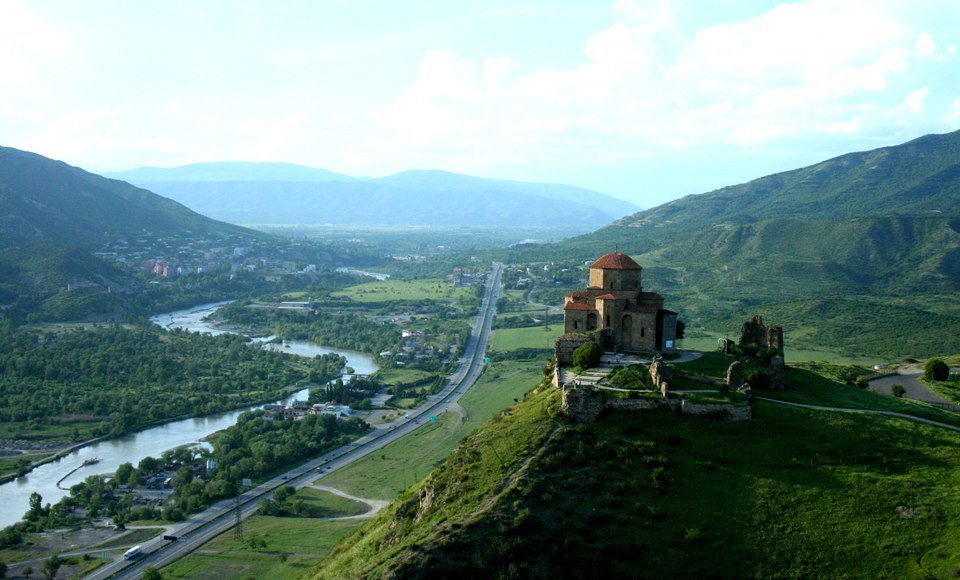
But in Jvari monastery there were those who were not afraid of the wrath of God! In the seventh century the Arabs set fire to the monastery. In the 18th century Lezgins ruined village around the monastery. Today Jvari monastery is extremely popular tourist attraction. At night the site is beautifully lit. It creates a sense of unreality; when all around is covered with darkness, and it's like a magical castle floating in the sky.
According to Georgian hagiographic tradition in the first century Georgian Jew from Mtskheta named Elias visited Jerusalem in the time when Jesus was crucified, and bought the robe of the Lord from a Roman soldier.
The first who saw the robe after the return of Elias's home was his sister Sidonia. Touching the robe, it fell dead, with such a strong emotional effect made it a sacred object. Since the tunic was not able to take out of the hands of a dead woman, Sidonia was buried along with the tunic and the burial place as the legend goes, is in Svetitskhoveli.
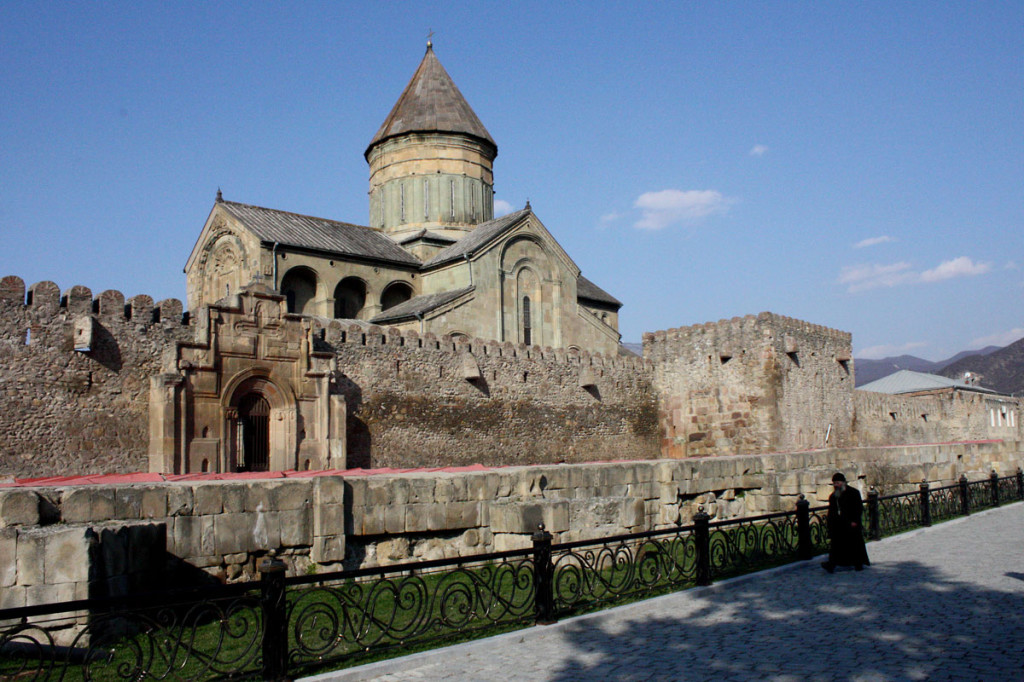
Out of that grew the huge cedar, they cut him down for the Church, which St. Nino was advised to build a king Mirian III, the first Christian king of Georgia. Cedar turned seven columns, but the seventh column, possessing magical properties, soared. St. Nino all night fervently prayed that the column returned to earth.
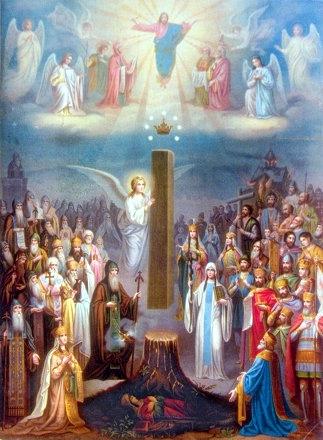
The image of this event can be seen on the second column to the right of the entrance to the Church: Sidonia with the angel, removing the column from the heavens. In the foreground is Saint Nino. With the two sides are king Mirian and his wife Queen Nana. The legend also tells that from magic column flowed the sacred fluid that has curative properties. “Svetitskhoveli” translated as “The Vivifying Pillar”.
First Church has not survived to our days, in the second half of the fifth century Vakhtang I Gorgasali (a king of Iberia, natively known as Kartli (eastern Georgia)) built a Basilica. Architecturally it was the dominant style typical of the period for Georgian churches.
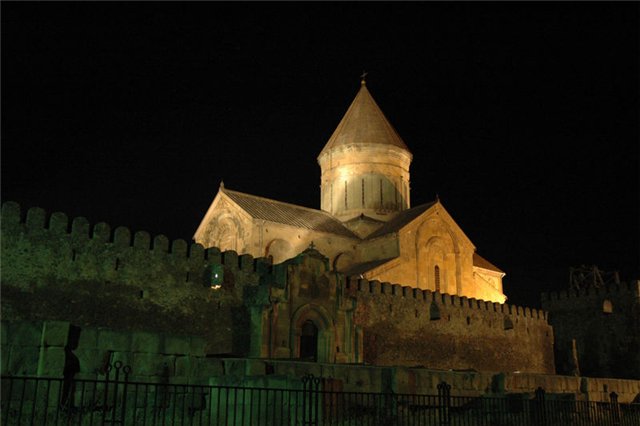
The beautiful Cathedral was founded in the early eleventh century by the first Catholicos-Patriarch of All Georgia Melkisedek I. Now-existing Church in the style of the cross on the dome was built by an architect of Constantine Arsukidze, whose name is mentioned on the facade, with 1010 on 1029 years. On the North wall from the outside, a small sculpture – the right hand holding a chisel, under which the inscription «The hand of Arsukidze, slave of God May forgiveness be his”.
The epochal novel by 20th century outstanding Georgian writer Konstantine Gamsakhurdia “The Right Hand of the Grand Master” (დიდოსტატის კონსტანტინეს მარჯვენა) tells the story of the building of the temple. The author refers to the partially legendary story of renovation of Svetitskhoveli Cathedral by a young enigmatic architect Constantine Arsukidze (stylized as Constantine Arsakidze in the book).
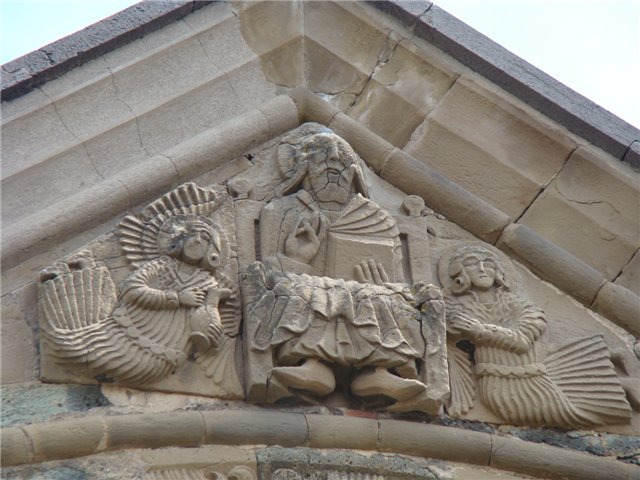
According to the legend, the priest, that was the patron and teacher of Arsakidze, very jealous of the success of his pupil. He used his influence with the king, and made the brilliant architect was deprived of his right hand, although there is no actual confirmation of this legend. On the East panel of the temple there is an inscription (1029): "the Holy Church built by the hand of the unfortunate servant of God, Arsakidze. Let my soul calm itself, O Christ, in thee!” The inscription is indicative of the fact that Arsakidze never saw his masterpiece completed.
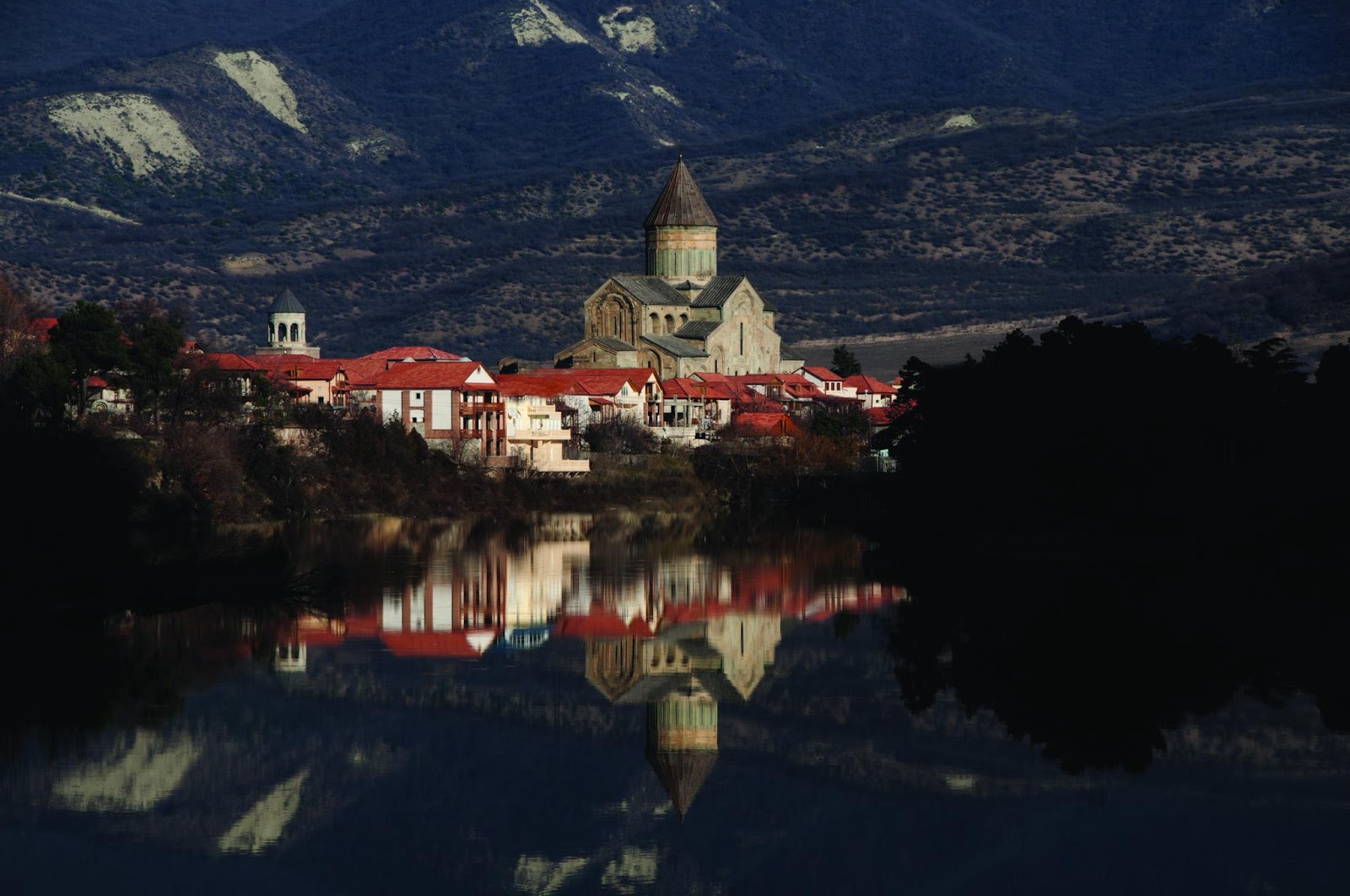
Irakli II in 1787 surrounded the Cathedral with a protective wall of stone and brick equipped with firing positions. The entrance to the Cathedral from the wall is to the South. The wall has eight towers: six of them are cylindrical, two – square. During archaeological research in 1963 in the southern part of the wall discovered the remains of the home of the Patriarch of the 11th century, and in the churchyard is the remains of a two-storey castle Patriarch Anton II.
Fragments of the original Church of St. Nino and Basilica, discovered during the restoration work, and opened the top of the pillars were left for review.
